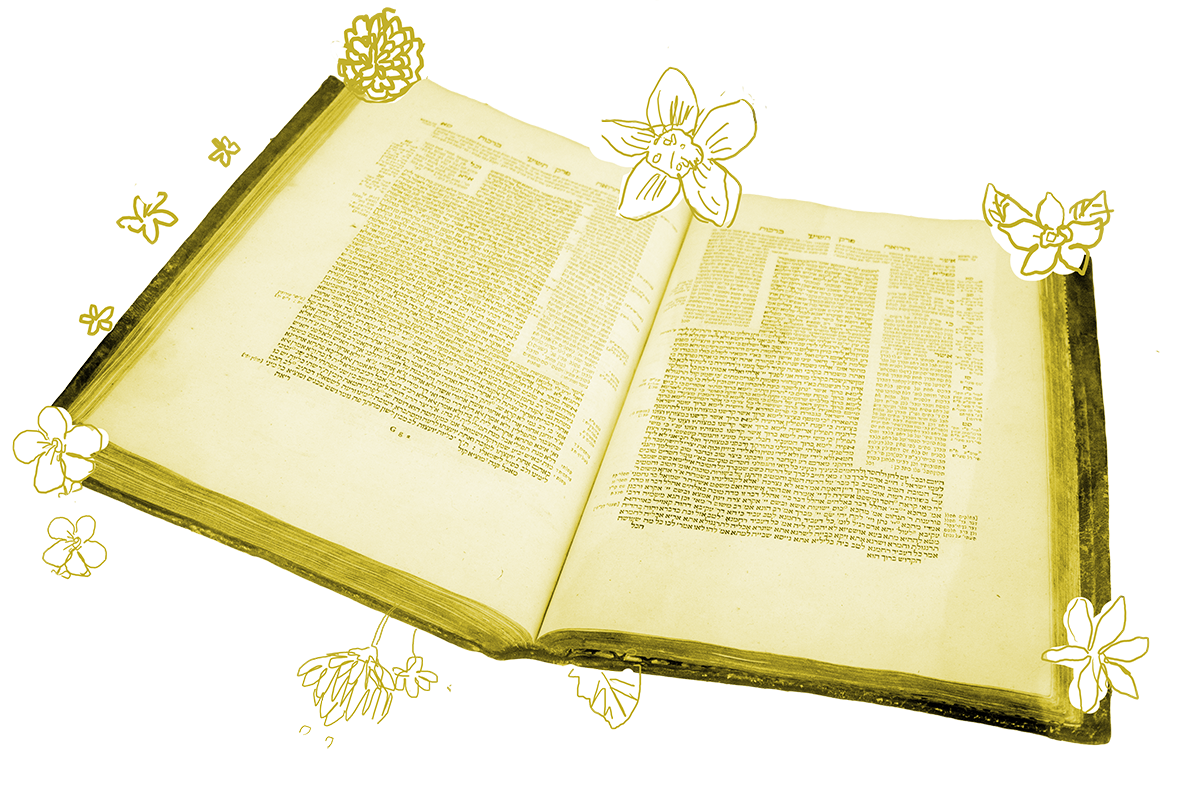Halakhic decision making can be, at times, a bit convoluted. New rules are sometimes born awkwardly from older ones, and rabbinic thinking can fly in the face of contemporary logic or knowledge. But on today’s daf, we find one of those occasions when you can trace a rule directly from Torah through the Mishnah to a page of Talmud to see how one or two biblical verses can grow into something far bigger.
We begin with this law from Leviticus 17:12-13:
“No person among you shall partake of blood, nor shall the stranger who resides among you partake of blood. And if any Israelite or any stranger who resides among them hunts down an animal or a bird that may be eaten, he shall pour out its blood and cover it with earth.”
So far, pretty easy stuff: It’s forbidden to eat the blood of an animal and the blood that results from a slaughtered animal should be covered with dirt. That said, in the context of slaughtering an animal on a holiday, things get a bit more complicated due to festival work restrictions, which normally would prohibit digging in the earth to cover spilled blood.
With your help, My Jewish Learning can provide endless opportunities for learning, connection and discovery.
In the mishnah that opened this tractate back on Beitzah 2, we encountered a dispute between Hillel and Shammai about how to handle such a situation. Shammai said that it’s permissible to use a shovel on a festival to cover the blood, but Hillel — in one of the rare instances of taking a more restrictive position than Shammai — says it’s not permitted: The blood must be covered by earth that had been dug in advance. Both agree, however, that ashes from a stove generally may be used for covering the blood.
On today’s daf, the Gemara picks up on this last item related to stove ashes:
Rav Yehuda said that Rav said: They only taught (that the ashes of a stove are considered prepared if the stove was ignited) on the festival eve, (so that the ashes had already formed at the start of the festival). However, if it was ignited on the festival itself, the ashes are prohibited. And if the ashes (are still hot and fit) to roast an egg in them, (they are not considered muktze), and therefore it is permitted to use them for covering as well.
This teaching implies that Hillel and Shammai only agreed on the permissibility of using ashes to cover the spilled animal blood in a case where the stove was lit prior to the festival. But if the stove was lit on the festival, those ashes would not be permitted. It further tells us that if the ashes are warm, they may be used for covering the blood.
The logic of this last point is a bit confusing: Sure, ashes that at least partly formed before the holiday begins don’t violate rules restricting work on holidays. But what’s the problem with cold ashes?
The answer relates to muktzeh, a topic we explored in detail in Tractate Shabbat. Muktzeh refers to items that may not even be touched, let alone used, on Shabbat or festivals. Among those items is something that is nolad (literally “born” — i.e., created) on Shabbat or a festival. (Strangely enough, muktzeh rules are stricter for festivals than for Shabbat, but that’s a topic for another day.)
We’ve seen this concept already in the Gemara’s discussion of whether an egg laid on a festival is permitted to be eaten (it’s not). Now we see it with ashes from a fire burning on a festival. Hot ashes, as Rashi explains (and the Rambam confirms), still have enough of their original woodiness that they’re not nolad and therefore not muktzeh. Cold ashes, however, are something new and are therefore forbidden. (A more complete explanation is available here.) As a result, you can touch all the hot ashes you want on a festival (with a utensil of some kind, please!), but leave those cold ashes alone.
This position — that warm ashes from the festival may be used — is solidified in the Shulchan Arukh, a 16th-century code of Jewish law. Indeed, the Tur, a 14th-century rabbinic authority, and the Shulchan Arukh both add explicitly that if one has already slaughtered the animal, one may cover its blood even with cold ashes, since that’s the lesser of two possible transgressions.
Lest we think everything settled, later commentators analyze what constitutes sufficient warmth, revealing that there’s always more to consider. See the Chafetz Chaim’s Biur Halakhah for one great discussion.
The idea that Jewish practice is conveyed in a chain of tradition, passed down uninterrupted from generation to generation, is a key concept in Judaism. Today’s page illustrates that concept in action and shows the important link that the Talmud plays in it.
Read all of Beitzah 8 on Sefaria.
This piece originally appeared in a My Jewish Learning Daf Yomi email newsletter sent on September 8th, 2021. If you are interested in receiving the newsletter, sign up here.



